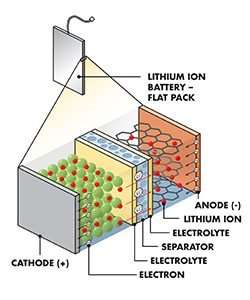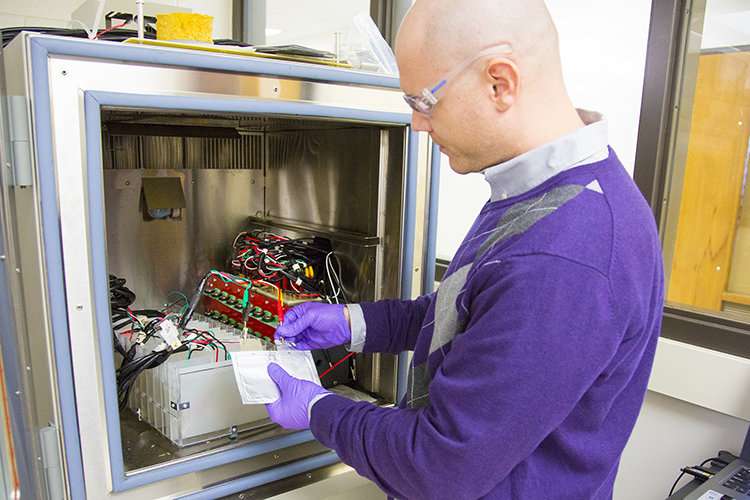Research could help electric cars beat the cold

Leave a car overnight in extreme cold and you might get an unpleasant surprise in the morning.
All car batteries labor to start an engine during a deep freeze. That's because chemical reactions needed to produce a current happen more readily when it's warm.
But researchers in Deyang Qu's lab have found a fix for the cold-car start – at least for electric vehicles, which use rechargeable lithium-ion batteries to spark ignition.
Qu, the Johnson Controls Endowed Professor in Energy Storage Research at UWM, and his researchers have come up with the right "recipe" for a part of the battery – the electrolyte. This liquid induces a chemical reaction to move lithium ions around, necessary for generating a current.
"It isn't the conductivity or the melting or freezing point of the electrolyte that has the largest effect on battery performance," said researcher Joshua Harris. "It really all depends on the electrolyte's components."
From the electrolyte's reactions with the anode, a layer of oxidation builds up. Called the SEI layer, it governs the performance of the battery.
If it grows too thick, it restricts movement of ions in the electrolyte, hindering the power. But if it's too thin, it allows the electrolyte to continuously react with the electrodes, and that reduces battery life.

The research team tested 46 combinations of electrolyte components to find the ideal mix, said Harris.
Temperature plays a role in how the electrolyte affects the SEI layer, he says. "The best conditions are actually cold temperatures, but not cold enough to decrease the battery's cycle life."
The research was done in collaboration with industry so whether it will morph into a commercial product is still uncertain.
"This is one instance where we have developed the technology to solve the problem," says Qu. "Now it's up to companies to decide whether they want to invest to commercialize it."
Provided by University of Wisconsin - Milwaukee





















